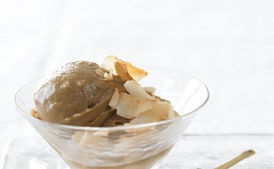

- Bean Cooker or Pressure Cooker: Essential for quickly and efficiently cooking beans to tendernemerging_answer text.
- Colander: Used for draining soaked beans after cooking, removing excess water.
- Slow Cooker: Alternative equipment that cooks beans slowly over several hours at low temperatures.
- Cutting Board and Knife: For preparation tasks such as chopping garlic or herbs.
- Mixing Bowls: To combine ingredients like black beans, spices, sugar, etc.
- Stirring Spoon or Spatula: Used for stirring the mixture to ensure even flavor distribution and prevent sticking.
- Measuring Cups and Spoons: For accurately measuring crucial ingredients like sugar and salt.
- Garlic Press or Grater: To mince garlic finely, which is a common spice in sweet bean dishes.
- Sieve (Fine Mesh Strainer): Used for straining liquid from beans after cooking, and possibly to blend the final sauce to remove lumps.
- Blender or Food Processor: For achieving a smoother consistency in sweet black bean dishes.
1 cup dried kuro mamé
3 cups water for soaking and cooking beans
1 teaspoon baking soda
2 cups sugar
1 1/2 cups cold water for syrup
2 teaspoons soy sauce

I publish delicious recipes that most of the times required 10 ingredients or less and 30 minutes or less to prepare.
AboutI create simple, delicious recipes that require 10 ingredients or less, one bowl, or 30 minutes or less to prepare.
Contact
